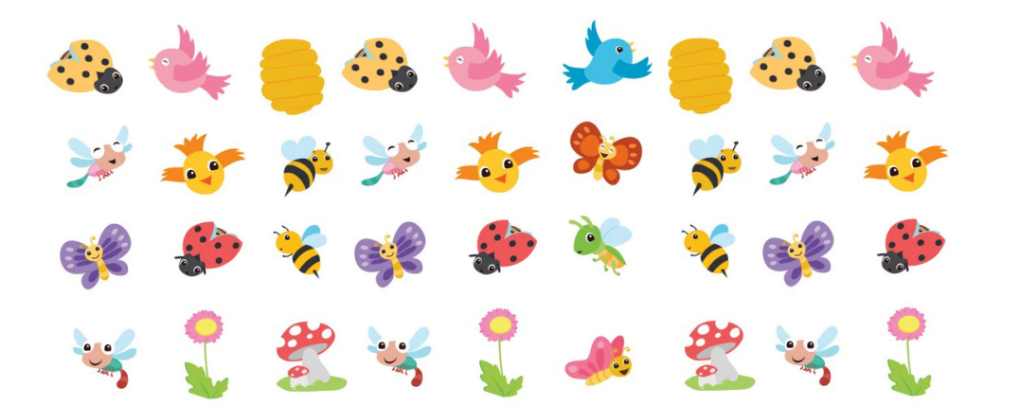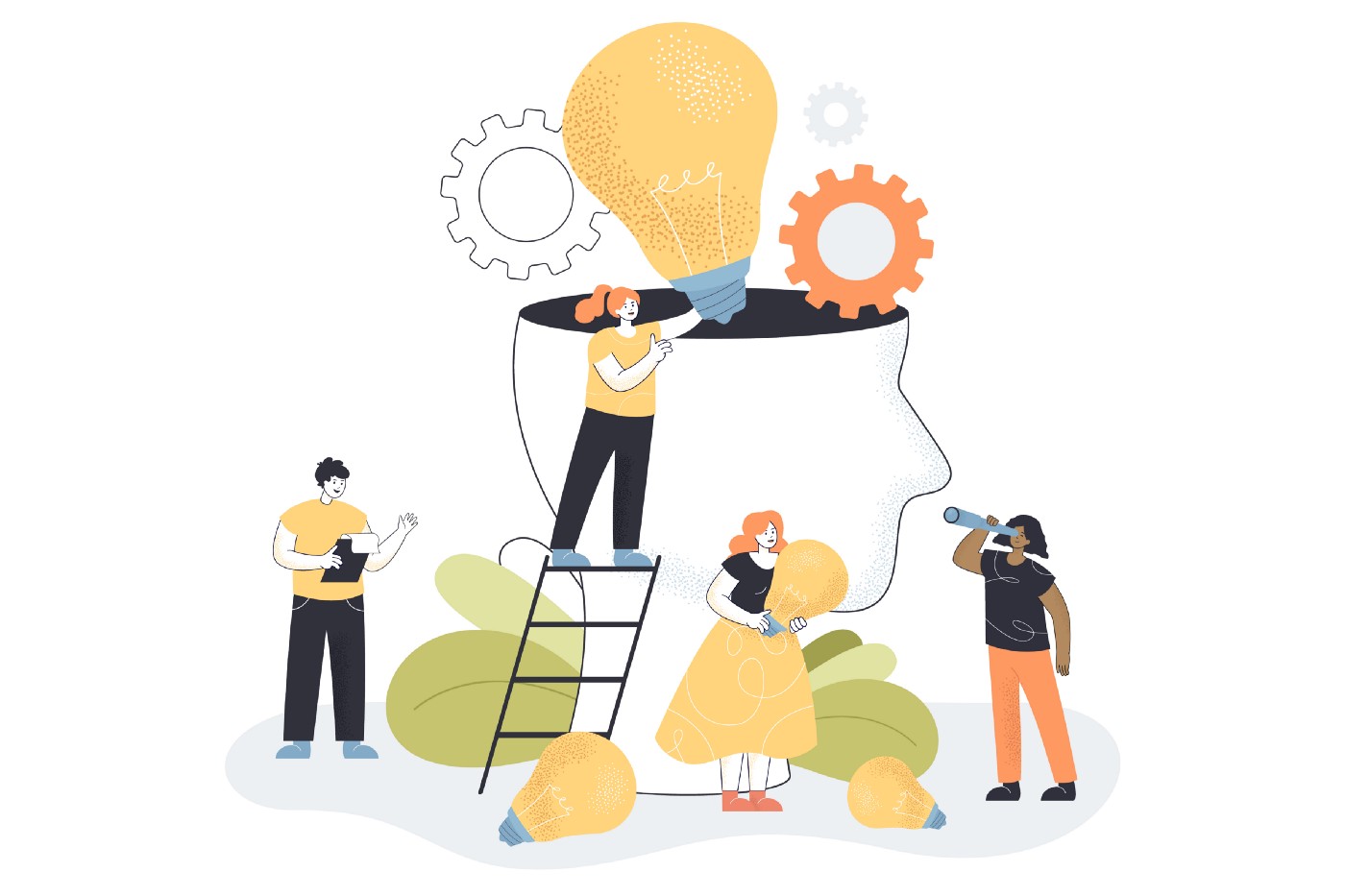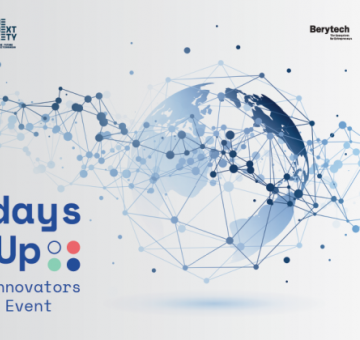Learning to Play with Innovation

Why games may offer a serious way to learn the craft of creating value from ideas?
Birds do it. Bees do it. Even educated fleas do it….. Well, I’m not sure about the last one but someone somewhere has probably done some research on the topic. We humans certainly do it, especially when we’re young. I’m not talking about falling in love but about extending Cole Porter’s observations to a different world, something up there in terms of importance — playing.
Play is basic animal behaviour and it’s worth asking the evolutionary psychology question of why? Wasting time and energy isn’t a good idea for the survival of any species. So why do human beings play?
Turns out that play is a pretty valuable device. As psychologist Peter Gray suggests play enables us to:
- Practice skills that are essential to our survival and reproduction;
- Learn to cope physically and emotionally with unexpected, potentially harmful events;
- Reduce hostility and enable cooperation;
- Generate new, sometimes useful creations.
And it’s that last element that makes it particularly relevant for innovation. Play may be fun — but it has a serious purpose. Our ability to imagine and create lies at the heart of our emergence as a successful species, whose main gift is not in size or strength but in our ability to adapt to hostile and uncertain environments. We innovate, find solutions and alternatives if our first options are blocked off.

Image:@brgfx on Freepik
Think about it. In situations where we’re trying to create new products or services or bring about process changes wouldn’t it be handy to have offline ways of simulating problem situations, learning teamwork, sharing knowledge co-operatively or experimenting safely?
The answer is, of course, yes and we’ve been doing it for some time. These days there are shelves full of books with titles like ‘Serious play’, ‘Experimentation matters’, ‘The playful entrepreneur’, etc. and they speak to the growing understanding of the important role which play can take in innovation. It’s become embedded in the core agile methodologies around prototyping — essentially creating boundary objects and then interacting with them — playing around with them — to get the best fit. It’s part of the hackathon culture of competing against the clock to come up with novel ideas; it’s the same sort of buzz as you get in escape room games. Making things playful is a powerful way of engaging interest so if you’re looking to capture user experience it makes sense to explore turning the focus group or questionnaire into a gamified approach, And if we want to break down organizational barriers and entice people out of their silos to share knowledge games can be a powerful tool
It’s not just about play processes like exploration and prototyping; it’s also about the structured environment within which play takes place. We can think of this as a space containing enabling elements; it builds on the same principles as underpin the way a kindergarten works. Typically, these are not austere classrooms but rather stimulating and interesting physical environments, equipped with play resources of many kinds, paints and bricks. These ‘play structures’ provide enabling scaffolding within which children can experiment and explore. What works in the world of children also has applications for adults.
It’s no accident that we’re seeing increasing attention being paid to environments to enable innovation — for example, the Googleplex, Apple’s new headquarters or the Pixar studios. The idea of ‘innovation labs’ has become a ‘must-have’ accessory for any organization (public or private sector) concerned with innovation, recognising the need for dedicated spaces within which experimentation can happen. They provide safe offline environments — what might be termed ‘boundary spaces’ — in which play can happen as a route toward innovation.

Image: @pch.vector on Freepik
And within these play structures, we can find growing use of games — as structured, goal-directed patterns of play. Dave Gray and colleagues suggest that games represent a particular kind of play which have five key characteristics:
- Game space — an environment in which the rules of ordinary life are temporarily suspended and replaced with the rules of the game. In effect, it involves a temporary alternative world.
- Boundaries — games have a definite point at which they start and end and other boundaries — for example in physical space. A football game has time and the boundaries of the pitch, for example.
- Rules for interaction — these define the way the game is played together with the game space boundaries
- Artefacts — these are elements that enable the game to be played or carry information about the rules. For example, the counters on a board game, the ball, bat and other equipment in a sport game, etc.
- Goal — games have a purpose and an endpoint, a winning state when the objective is achieved.
Games offer powerful opportunities to work with alternative worlds and explore, experiment and create in focussed fashion. They have been extensively used in a variety of ‘serious’ contexts — for example as ‘safe’ ways to explore and resolve organizational conflicts, to break down silos, to build trust, to enable more effective collaboration within and between teams, etc.
So there’s a strong argument for learning to play as a serious addition to our innovation routines. But the reverse is also true — there’s considerable scope in playing to learn about innovation. Whether it’s in a classroom, a company training event, or an online webinar there’s a limit to how well knowledge can be transferred through conventional routes like lectures and reading/watching/listening.
The value of games is that they can extend the repertoire available to us as teachers and coaches, offering a key complement to the rich library of concepts and tools which we are curators of. The key contribution of games is to create experiences around which structured reflection can take place.
In particular:
- They create a temporary alternative world with boundaries in time and space, within which safe exploration can take place.
- They involve rules and other play structures and elements
- They allow for interactivity between players and game objects, enabling experience of the ‘drama’ in the situation being modelled
- They allow for multiple simulations in which players can experiment with different strategies
- They provide motivation, the fun element of a game draws people in
- They permit experimentation within the game context
In the context of ‘flipping the classroom’ there’s growing interest in alternative ways of engaging students to work with and around core conceptual material and games offer a powerful way of doing this. Even something as simple as a bundle of old newspapers can be configured into a game with the potential to illustrate key aspects of innovation like strategy, marketing, operations and rapid prototyping — as well as being fun!

Image: @pch.vector on Freepik
Not surprisingly there’s growing recognition of the potential of games and gamification as an aid to innovation learning and practice. Which is why we began a collaborative project with a number of companies and universities (and with funding from the EU’s Erasmus Plus programme) aimed at trying to understand how games might help. And, in the spirit of learning by doing, also developing some new games for innovation purposes along the way.
The GAMIFY project has been working over the past three years with the aim of creating new learner-centred teaching methods, opening up new learning opportunities and developing the practical application of entrepreneurial skills using games. It drew together a rich ’knowledge alliance’ of partners including Deutsche Telekom, 3M, Danske Bank, Lufthansa Systems, Kamstrup and Generali from the industry side, four universities (HHL Leipzig, HMKW Berlin, Complutense University of Madrid, Design School Kolding), together with the dissemination capacity of ISPIM and the quality assurance competence of ASIIN accreditation agency.
It’s worth highlighting a couple of headlines from the project findings.
First, play can help extend the range of options which organizations can deploy to support their innovation process. We’re increasingly familiar with the front end — the ideation stage where games built around creative thinking can be fun but also trigger valuable new insights. But games can also apply elsewhere on the journey — think about strategy and we have games to help explore and simulate competitive decision making.
How about implementation — the tricky journey from idea to reality? Games can help here, offering simulation and rehearsal possibilities and helping think through the challenges of change management. Knowledge management? — there’s a game for that. Or building partnerships to help with the challenge of scaling innovations. In the book, there are descriptions and links to over 70 customizable games already in use by innovators, entrepreneurs and professional trainers.
Second, games have a structure. They’re not simply random ideas but instead provide rules and gameplay procedures to enable them to be repeated and widely used. They are built up from some basic pattern elements and this opens up the possibility of creating games to order, picking a situation and then developing a suitable play device to help, assembling it by combining different game patterns.

Image: Freepik
A simple illustration of this is the (extensive) range of games which have been developed to help understand key concepts around team working for innovation using a box of eggs. The common elements include a strongly competitive element, a sense of jeopardy (eggs have a habit of breaking) and a race against the clock!
One of the features of the book is an attempt to offer a typology of patterns which can be combined into different gameplay possibilities — a kind of ‘Lego box’ of game possibilities. This involves 36 reusable gamification design patterns, a five-step process and a game design canvas to create your own innovation games. Being able to design and configure games in this way means we can use them to help explore and elaborate key themes and offer the opportunity to experience and make sense of the challenges which innovation can pose.
Games can also help at the innovation frontier, offering ways to explore and understand emerging and tricky issues and helping our understanding and concept development. Innovation involves a moving frontier and updating our maps for working in that uncharted space can usefully include developing games to provide access to emerging knowledge about it.
For example there are many games which help illuminate the issue of new product or service development and the role which team working plays within that. But recent years have seen a big shift towards online collaboration between remote teams; learning how to do this and exploring some of the complex issues involved is less well understood. A mapping operation is needed to help articulate and mobilise this emerging knowledge — and games might play a useful role in this. But first we have to design and make them — and one of the many games described in the book was explicitly developed during the Covid-19 lockdown as a way of helping company teams work remotely on such innovation projects.

Image: @creativeart on Freepik
In the book, there are several new games which were specifically developed and tested by the partners to help deal with emerging but significant innovation challenges,
including:
- The Corporate sustainability game is designed to help participants to identify sustainability challenges at the workplace and generate ideas and future scenarios on how to address them.
- The Customer First game deals with challenges related to creating more human-centric organizations that can respond to changing customer needs
- The Business Model Branching game deals with the difficult and complex challenges of balancing ongoing operations with new innovation-oriented activities. It engages decision-makers and innovation managers in allocating resources and developing competencies for specific lines (branches) of their business, deciding when to reconfigure and close existing ones, and when to launch and ramp up new ones.
- The Shift game explores practical ways and strategies to overcome innovation barriers and organizational ambidexterity paradoxes in established organizations.
- The Proximity Seeker game was developed to address the challenges of social dynamics, especially in remote teams
- The Ecosystem Canvas game allows future entrepreneurs to become aware of and explore the potential for joint value creation in networks.

Image:@colorfuelstudio on Freepik
The main message of the book is simple; learning to play and playing to learn could represent a valuable set of innovation skills.
We often talk about ‘pastimes’ as a collective noun for a variety of games and play devices. But that tends to nudge them towards a box which implies they aren’t serious, they are simply ways of passing the time. Maybe it’s worth taking a second look at how they might make a real contribution to how we work with the innovation challenge.
- Check out the author's website here, Or listen to his podcast here.
- Original Source of this article here and it is re-published here after his authorization.
- Cover image source: @terdpongvector on Freepik.







































































EgyptInnovate site is not responsible for the content of the comments